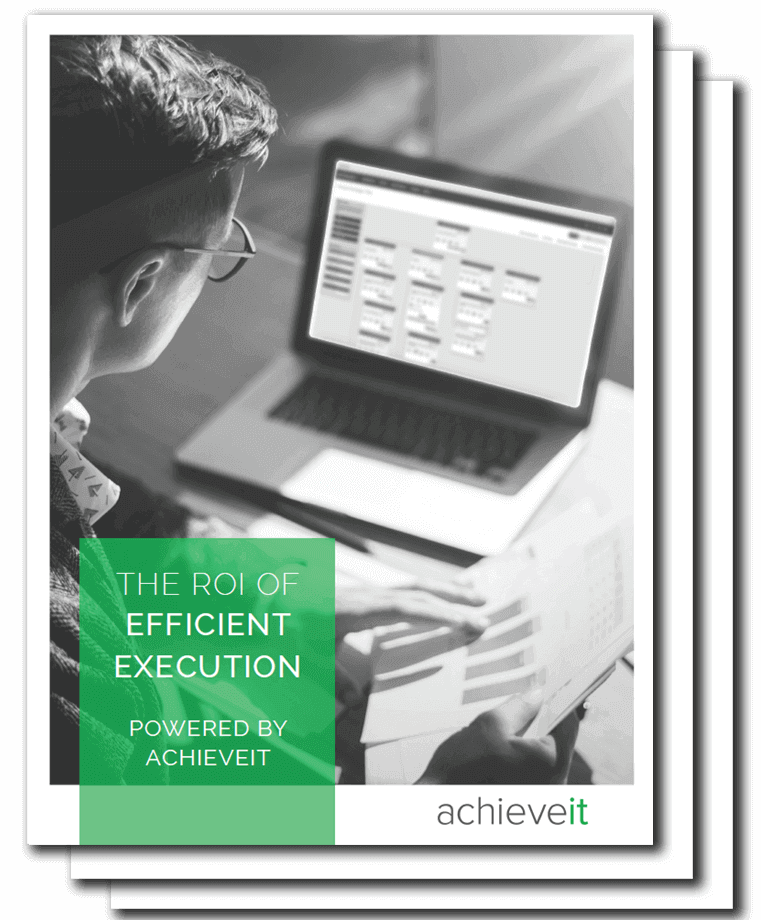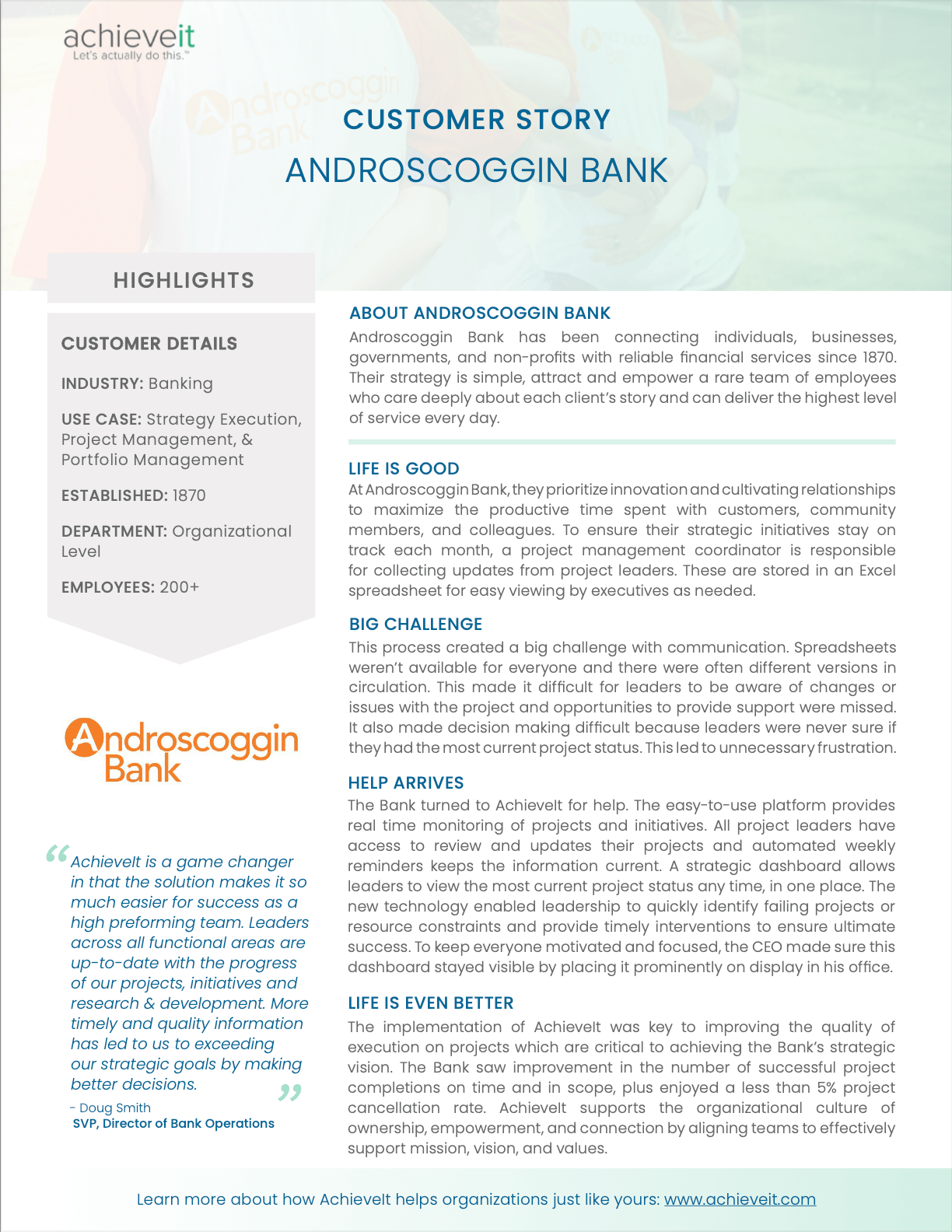The last few years have unfolded with great unpredictability, from the unexpected upheavals brought on by the COVID-19 pandemic to a global inflation surge and the potential for a recession. Organizations have been navigating through an era marked by profound shifts. These dynamics have redefined the landscape in which strategies are conceived, implemented, and adapted. The ability to foresee and respond to disruptions has become paramount to achieving sustainable success.
The COVID-19 pandemic ushered in unparalleled challenges, prompting many to pivot their plans and operations almost overnight. As the world emerges from this transformative period, it’s clear that strategies cannot remain static and rigid. Organizations now face an imperative to infuse their strategies with adaptability, resilience, and agility.
The notion of creating multi-year plans has given way to a more dynamic and responsive approach. Strategy leaders are realizing that the strategies of today must be able to navigate the uncertainties of tomorrow. As organizations grapple with a shifting economic landscape and the rapid pace of change, they are seeking ways to future-proof their strategic planning and execution processes.
There are a number of strategies that organizations and strategy leaders can adopt to fortify their strategic planning and execution processes. By embracing a proactive mindset, leveraging technology, and rethinking traditional methodologies, organizations can craft strategies that stand the test of these unpredictable times.
Future-proofing your strategic planning and execution processes
Navigating the evolving landscape of strategic planning and execution requires a proactive approach that can adapt to rapid changes and uncertainties. In this section, we’ll explore some key strategies recommended by Joe Krause, VP of customer engagement at AchieveIt, to make your strategic planning and execution processes more resilient. From setting a fixed cadence to redefining KPIs, these strategies provide actionable insights for strategy leaders aiming to create agile and adaptive organizational frameworks.
1. Set a fixed cadence of working
In volatile times, effective management begins with making time for strategic planning and execution rather than letting excuses hinder progress. Joe says, “If you don’t have a strategic plan, you really have no direction. You’re just kind of working on operational issues, plugging the holes as you go along, but you’re not really growing; you’re surviving.”
It’s important to carve out dedicated time for planning sessions, setting clear objectives, and establishing a fixed cadence for meetings. By creating a structured schedule, organizations ensure that essential discussions take place and decisions are made within a specific timeframe. This approach prevents projects from stagnating, encourages accountability, and fosters a sense of urgency that is critical in adapting to ever-changing circumstances.
2. Schedule quicker touchpoints
In today’s fast-paced environment, waiting for monthly updates may hinder effective decision-making. Joe says, “If you’re moving quickly, or if you’re in a situation where you’re in distress, you don’t have the luxury of a monthly update key cadence.” You need to adopt quicker touchpoints, such as weekly or bi-weekly updates, to keep projects on track and enable rapid responses. These frequent discussions ensure that teams stay aligned, identify potential roadblocks early, and remain adaptable to changing conditions. By increasing the frequency of updates and discussions, organizations can address challenges promptly and steer initiatives in the right direction.
FREE RESOURCE
The ROI of Efficient Execution
Download this guide and the companion calculator worksheet to show your team what you’re leaving on the table without enabling plan visibility, organizational alignment, or automated accountability.

3. Be ready to make quicker decisions
Agile decision-making is a cornerstone of adaptability. Using structured approaches like the EOS’ Level 10 Meeting provides a platform to address issues, discuss potential solutions, and implement decisions within a focused timeframe. This approach ensures that challenges are tackled head-on and solutions are formulated collaboratively, reducing the risk of prolonged indecisions.
An important part of this approach, according to Joe, is “making sure that you don’t beat yourself too much when those rapid decisions end up becoming a wrong decision.”
4. Know when to pull the plug
Recognizing when to pivot or terminate a project is crucial for preventing wasted resources and efforts. Leaders need to trust their instincts and make decisions sooner rather than later. By learning from past mistakes and identifying early signs of project challenges, organizations can optimize their resource allocation and avoid persisting with initiatives that are no longer viable. This approach fosters a culture of learning, adaptation, and responsible resource management.
“Ask any leader to look back on past projects that, in hindsight, ran on for longer than they should have,” says Joe. “If they’re honest with themselves, they will say that they knew about six months before pulling the plug that the project was doomed. So it’s all about trusting your instinct. Don’t pull too early, but don’t wait too long.”
5. Develop the right KPIs
Key performance indicators (KPIs) play a pivotal role in measuring progress and informing strategic decisions. Focus on a select number of critical KPIs per department that genuinely reflect the health of the project. Regularly reviewing these KPIs ensures that teams are aligned and efforts are geared toward achieving meaningful outcomes. By selecting KPIs that offer actionable insights and mapping them to strategic goals, organizations enhance their ability to assess progress accurately.
Incorporating these strategies into your strategic planning and execution processes equips your organization with the tools needed to thrive in uncertain times. By adopting a proactive mindset, embracing quicker touchpoints, making agile decisions, recognizing when to pivot, and refining KPIs, strategy leaders can build adaptable frameworks that stand the test of change.
How resiliency benefits your strategic processes
Implementing strategies to fortify your strategic planning and execution processes in uncertain times offers a multitude of advantages, enhancing the overall effectiveness of your approach.
Informed decision-making through team collaboration
Adopting strategies such as setting a fixed cadence and embracing quicker touchpoints fosters a collaborative environment. As Joe highlights, “If you have that level of transparency, it’s multiple people chiming in with different disciplines to get you to a solution quicker.”
This inclusivity brings diverse perspectives to the table, enriching the decision-making process.
Data-driven decision-making
A cornerstone of resilient strategic planning lies in making data-driven decisions. Joe emphasizes that decisions shouldn’t hinge solely on emotions or finances but rather on evidence-backed insights. “You’re making data-driven decisions… it has to be a decision made with the preponderance of evidence.”
Regular touchpoints and proactive discussions ensure that decisions aren’t delayed by the pursuit of absolute certainty. Instead, these strategies allow leaders to make informed choices based on a blend of data, expertise, and timely considerations.
Enhanced visibility and succession planning
Implementing these strategies doesn’t just benefit the present; it has a lasting impact on the organization’s future. Weekly interactions and updates create visibility across teams, ensuring that knowledge isn’t confined to individuals. Joe elaborates, “It’s also creating visibility to all the work in the organization… It’s not starting from complete scratch when bringing someone new in, which can be a nightmare.”
This enhanced visibility aids in succession planning by preventing knowledge gaps and minimizing disruption when team members transition. By consistently sharing progress and updates, organizations build a resilient foundation for ongoing success.
FREE RESOURCE
Androscoggin Bank Customer Story
Read this customer story to better understand how a bank unlocked the key to cultural success and improved the quantity and quality of execution with AchieveIt.

How Androscoggin Bank achieved resilience with AchieveIt
Androscoggin Bank, established in 1870, was previously reliant on manual processes like using Excel sheets for project tracking. Because of this, the bank faced communication and decision-making hurdles.
Thanks to AchieveIt, Androscoggin Bank overcame these challenges. AchieveIt’s dynamic features facilitated efficient communication, equipping project leaders with easy access to updates and automating reminders. It allowed leadership to quickly identify failing projects or resource constraints and provide timely interventions to ensure ultimate success.
The results spoke volumes. Androscoggin Bank saw a remarkable improvement in project completion rates, with successful projects delivered on time and within scope. With a project cancellation rate of less than 5%, AchieveIt not only elevated execution quality but also fortified the bank’s organizational culture of empowerment, ownership, and alignment.
Explore how Androscoggin Bank harnessed AchieveIt’s technology to drive resilience and excellence. Explore the complete case study here.



